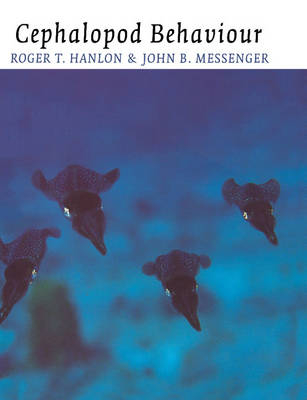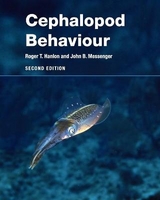
Cephalopod Behaviour
Seiten
1998
Cambridge University Press (Verlag)
978-0-521-64583-6 (ISBN)
Cambridge University Press (Verlag)
978-0-521-64583-6 (ISBN)
- Titel erscheint in neuer Auflage
- Artikel merken
Zu diesem Artikel existiert eine Nachauflage
There are about 700 species of cephalopods (cuttlefishes, squids, octopuses and the chambered nautiluses) living throughout the seas of the world. This 1996 book examines their behaviour, summarizing field and laboratory data from a wide variety of sources in a comprehensive account of the life of cephalopods in their natural habitats.
There are about 700 species of cephalopods (cuttlefishes, squids, octopuses and the chambered nautiluses) living throughout the seas of the world, some between the tides, others in the deep ocean, and yet others in the surface waters. Cephalopods are considered to be the most highly evolved marine invertebrates and possess elaborate sense organs, large brains and complex behaviour. This 1996 book examines that behaviour, summarizing field and laboratory data from a wide variety of sources in a comprehensive account of the life of cephalopods in their natural habitats. It surveys the way they find prey and escape predators, how they reproduce, how they learn and how they communicate using complex body patterns. Throughout it emphasizes the gaps in our knowledge in the hope of stimulating more biologists to study these beautiful and fascinating animals.
There are about 700 species of cephalopods (cuttlefishes, squids, octopuses and the chambered nautiluses) living throughout the seas of the world, some between the tides, others in the deep ocean, and yet others in the surface waters. Cephalopods are considered to be the most highly evolved marine invertebrates and possess elaborate sense organs, large brains and complex behaviour. This 1996 book examines that behaviour, summarizing field and laboratory data from a wide variety of sources in a comprehensive account of the life of cephalopods in their natural habitats. It surveys the way they find prey and escape predators, how they reproduce, how they learn and how they communicate using complex body patterns. Throughout it emphasizes the gaps in our knowledge in the hope of stimulating more biologists to study these beautiful and fascinating animals.
Preface; Acknowledgements; 1. Introduction; 2. Senses, effectors and the brain; 3. Colour change and body patterning; 4. Feeding and foraging; 5. Defence; 6. Reproductive behaviour; 7. Communication; 8. Learning and the development of behaviour; 9. Ecological aspects of behaviour; 10. Nautilus; Epilogue; References; Index.
| Erscheint lt. Verlag | 13.8.1998 |
|---|---|
| Zusatzinfo | 50 Tables, unspecified; 8 Plates, color; 27 Halftones, unspecified; 81 Line drawings, unspecified |
| Verlagsort | Cambridge |
| Sprache | englisch |
| Maße | 189 x 248 mm |
| Gewicht | 580 g |
| Themenwelt | Naturwissenschaften ► Biologie ► Limnologie / Meeresbiologie |
| Naturwissenschaften ► Biologie ► Zoologie | |
| ISBN-10 | 0-521-64583-2 / 0521645832 |
| ISBN-13 | 978-0-521-64583-6 / 9780521645836 |
| Zustand | Neuware |
| Haben Sie eine Frage zum Produkt? |
Mehr entdecken
aus dem Bereich
aus dem Bereich
Naturerfahrungen zwischen Quelle, See und Wildfluss
Buch | Hardcover (2024)
Verlag Anton Pustet Salzburg
30,00 €
Buch | Hardcover (2022)
National Geographic Deutschland (Verlag)
39,99 €



